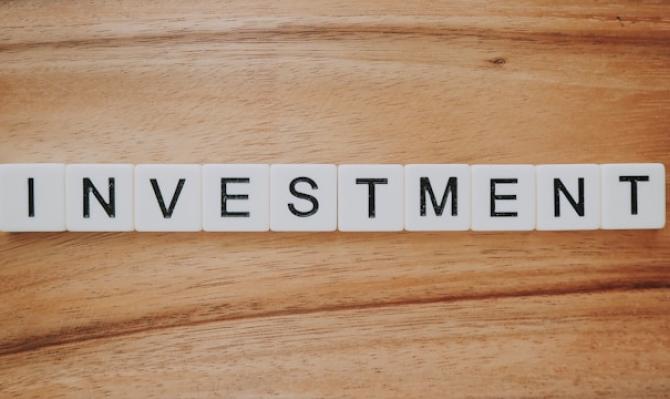Investment is of capital importance
The recovery of investment should gain traction over the coming years and, in the case of the Spanish economy, the execution of the European NGEU funds is expected to exert ever greater traction on private investment.

Investment is back in the spotlight. It is becoming increasingly clear that the rapid rate of technological change and the emergence of new countries with the capacity to compete globally, especially China, will leave those economies that fail to update their productive fabric behind. Moreover, this is happening in a context of growing distrust of multilateral institutions and, in general, between the various economic blocs. Even the relationship between the US and Europe, which seemed unwavering a few years ago, is being questioned. Donald Trump’s repeated warnings of a widespread increase in tariffs if he wins the election serves as a stark warning.
We have seen announcements of measures to boost domestic productive capacity and plans of reindustrialisation in virtually all countries in recent years, and these have been accentuated in the wake of the pandemic and the energy crisis. In this context, investment is a key thermometer for measuring the impact of the measures announced. Investment is the benchmark variable for assessing which countries are expanding and modernising their stock of capital.
The recent evolution of total investment in the major developed economies is rather poor. In 2023, investment in fixed capital grew by 0.6% in the US, 0.9% in the euro area and, in Spain, by 0.6%. These figures contrast with those recorded during the last expansive cycle. Between 2014 and 2019, in the US it grew by 4.6% per year on average; in the euro area, by 3.9%, and in Spain, by 4.8%.
However, the aggregate figures hide important nuances. In the US, the growth of total investment has been penalised by the sharp fall in residential investment, which has been the hardest hit by the rise in interest rates, although in the closing weeks of last year it already began to show signs of recovery. Investment in non-residential construction is rapidly recovering and in 2023 it grew by a significant 13.0%. Above all, however, the most buoyant areas of investment include intellectual property rights, with an average growth over the last three years of 8.0%, computer equipment and software, with 3.9% average growth, and research and development, at 5.2%. Thus, in the US, non-residential private investment now lies over 10% above pre-pandemic levels.
In the euro area and in Spain, the nuances are also important, although the message is not quite as positive as in the case of the US economy. Like in the US, investment in housing has also declined significantly in many euro area countries and that penalises the aggregate view. On the other hand, investment in transport equipment stands out for the opposite reason, as it is experiencing significant growth and increased by 14.3% in 2023 in the euro area as a whole (with data up to Q3) and by 6.7% in Spain, although it still remains far from its pre-pandemic levels. Investment in machinery is also showing a strong growth rate across the euro area as a whole and lies 3.0% above pre-pandemic levels. In this area, the figures for Spain’s economy are still weak. Last year it posted a decrease of 1.8% and lies 8.7% below pre-pandemic levels. On the other hand, Spain is showing better performance in investment in intellectual property rights, which, despite remaining flat in 2023, was very buoyant in previous years and lies 8.4% above pre-pandemic levels.
The recovery of investment should gain traction over the coming years. The easing of financial conditions, which has already begun to take place and is expected to become consolidated from the second half of this year once the Fed and the ECB have begun to lower interest rates, could act as an important catalyst. An additional support factor which could contribute to this improvement during the course of the year is the recovery of industry, which is a particularly investment-intensive sector. Some indicators are starting to suggest that the sector may have bottomed out and could begin to recover if the energy crisis is finally declared over. Of particular note is the upturn in industrial production, especially with regard to capital goods, as well as the activity rates in the sector. In this regard, the containment of the war in Ukraine and of the conflict between Israel and Hamas is key in order for the incipient recovery to take hold.
In the case of the Spanish economy, the execution of the European NGEU funds is expected to exert ever greater traction on private investment. As set out in the Focus «Next Generation EU funds: how has the third year of European funding gone?», in this same Monthly Report, the rate of execution is steadily picking up after a somewhat hesitant initial start. In 2023, we estimate that just over 16 billion euros were executed (funds awarded and justified). This is lower than the amount originally anticipated. However, if a similar rate of execution is maintained over the next few years, in addition to the 24 billion euros which we estimate were already executed between 2021 and 2022, it should be possible to implement the full package of measures envisaged under the programme before the planned deadline in 2026. In addition to all this is the next execution of the loans requested in order to expand the programme with the addendum already approved last year. In this regard, just as important as the pace of execution achieved is that the programmes put in place succeed in transforming and energising the Spanish economy in a lasting way. To achieve this, a good pattern of investment is of capital importance.



